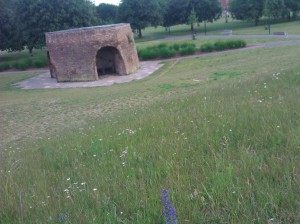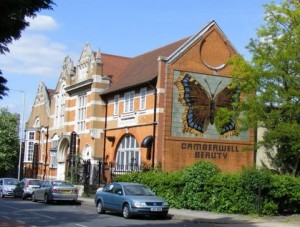The creation of Burgess Park
Burgess Park is one of London’s biggest parks. But its significance is due not so much to its size as to its history, and the unusual way it was created. Inspired by the Abercrombie plan and post-war optimism, the park was set up after hundreds of dwellings, factories and churches were demolished, thirty streets were covered over, the Grand Surrey Canal was filled in, and bomb-damaged areas were incorporated and grassed over. This unusual method of park development took place gradually, within living memory. The ever-increasing patches of green which stretched along the canal route were named Burgess Park in 1973. Over the following years various additions were made to the park such as the community sports facilites and the tennis centre.
Park Heritage
The park contains three listed buildings: the lime kiln, Chumleigh Gardens and Passmore Edwards Library and wash-house. In 2012 further revitalisation work was completed substantially re-moulding the park and re-moving many of the remaining redundant roads.


A 21st Century Park
Burgess Park is now incredibly popular and the BMX track opened in 2013 adding a new sport to the ten others available in the park. In 2018 a further phase of revitalisation for the south west corner of the park will remove the last remaining road; New Church Road, and improve the entrance way leading towards Camberwell.
A book about the history of Burgess Park, by Tim Charlesworth, and published by Groundwork is available, cost £5 plus p&p (proceeds to FOBP).